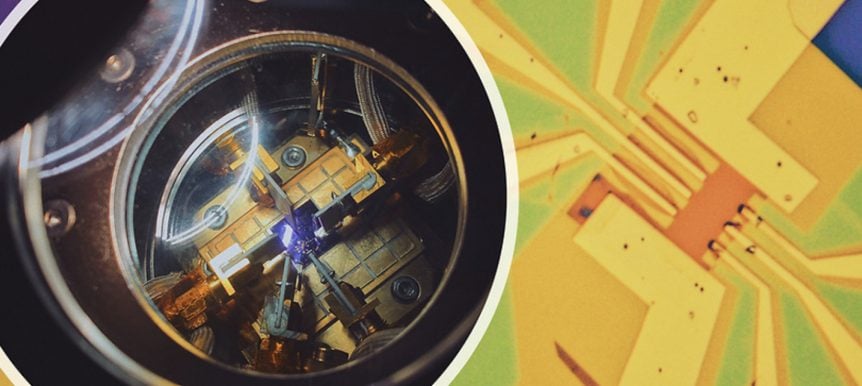With a ‘catch-and-release’ process, researchers advance graphene electronics

In recent years, atomically flat layered materials have gained significant attention due to their prospects for building high-speed and low-power electronics. Best known among those materials is graphene, a single sheet of carbon atoms. Among the unique qualities of this family of materials is that they can be stacked on top of each other like Lego pieces to create artificial electronic materials.
However, while these van der Waals (vdW) heterostructures are critical to many scientific studies and technological applications of layered materials, efficient methods for building diverse vdW heterostructures are still lacking.
A team of researchers has found a versatile method for the construction of high-quality vdW heterostructures. The work is a collaboration between the laboratory of Davood Shahrjerdi, a professor of Electrical and Computer Engineering at the NYU Tandon School of Engineering and a faculty member of NYU WIRELESS; a group led by Javad Shabani at the Center for Quantum Phenomena, New York University; and Kenji Watanabe and Takashi Taniguchi of National Institute for Materials Science, Japan. Their study was published this week in Nature Communications.
A crucial step for building vdW graphene heterostructures is the production of large monolayer graphene flakes on a substrate, a process called mechanical “exfoliation.” The operation then involves transferring the graphene flakes onto a target location for the assembly of the vdW heterostructure. An optimal substrate would therefore make it possible to efficiently and consistently exfoliate large flakes of monolayer graphene and subsequently release them on-demand for constructing a vdW heterostructure.
The research team applied a simple yet elegant solution to this challenge involving the use of a dual-function polymeric film with a thickness of below five nanometers (less than 1/10,000th the width of a human hair). This modification allows them to “tune” the film properties such that it promotes the exfoliation of monolayer graphene. Then, for the Lego-like assembly, they dissolve the polymeric film underneath the monolayer graphene using a drop of water, freeing graphene from the substrate.
“Our construction method is simple, high-yield, and generalizable to different layered materials,” explained Shahrjerdi. “It enabled us to optimize the exfoliation step independently of the layer transfer step and vice versa, resulting in two major outcomes: a consistent exfoliation method for producing large monolayer flakes and a high-yield layer transfer of exfoliated flakes. Also, by using graphene as a model material, we further established the remarkable material and electronic properties of the resulting heterostructures.”
The team included investigators Zhujun Huang, and Edoardo Cuniberto, Ph.D. students at NYU Tandon; Abdullah Alharbi of NYU Tandon and the King Abdulaziz City for Science and Technology, Riyadh, Saudi Arabia; and William Mayer, postdoctoral researcher at NYU’s Center for Quantum Phenomena.
The research was supported by a grant from the National Science Foundation.
“Versatile construction of van der Waals heterostructures using a dual-function polymeric film” is available at www.nature.com.

 2025 Brooklyn 6G Summit — November 5-7
2025 Brooklyn 6G Summit — November 5-7 Sundeep Rangan & Team Receive NTIA Award
Sundeep Rangan & Team Receive NTIA Award 2025 Open House
2025 Open House








